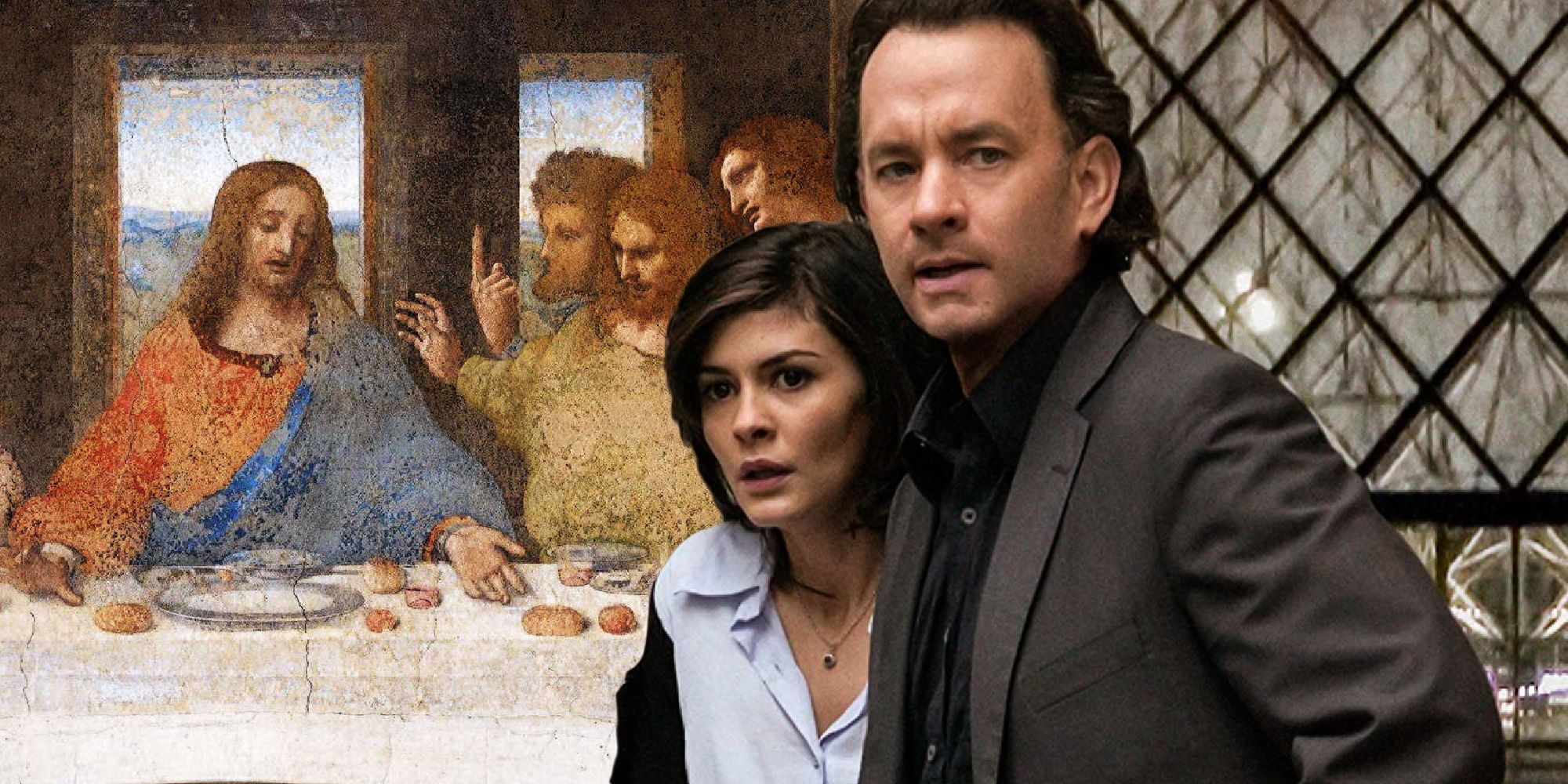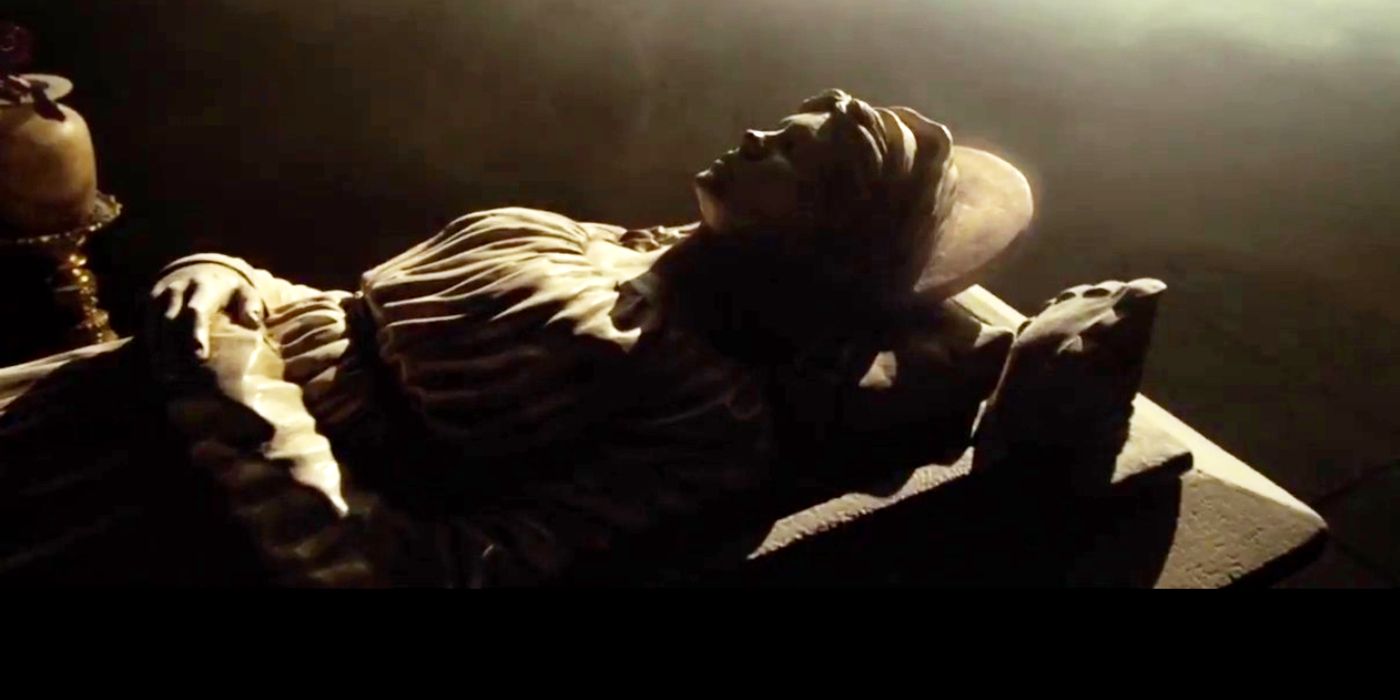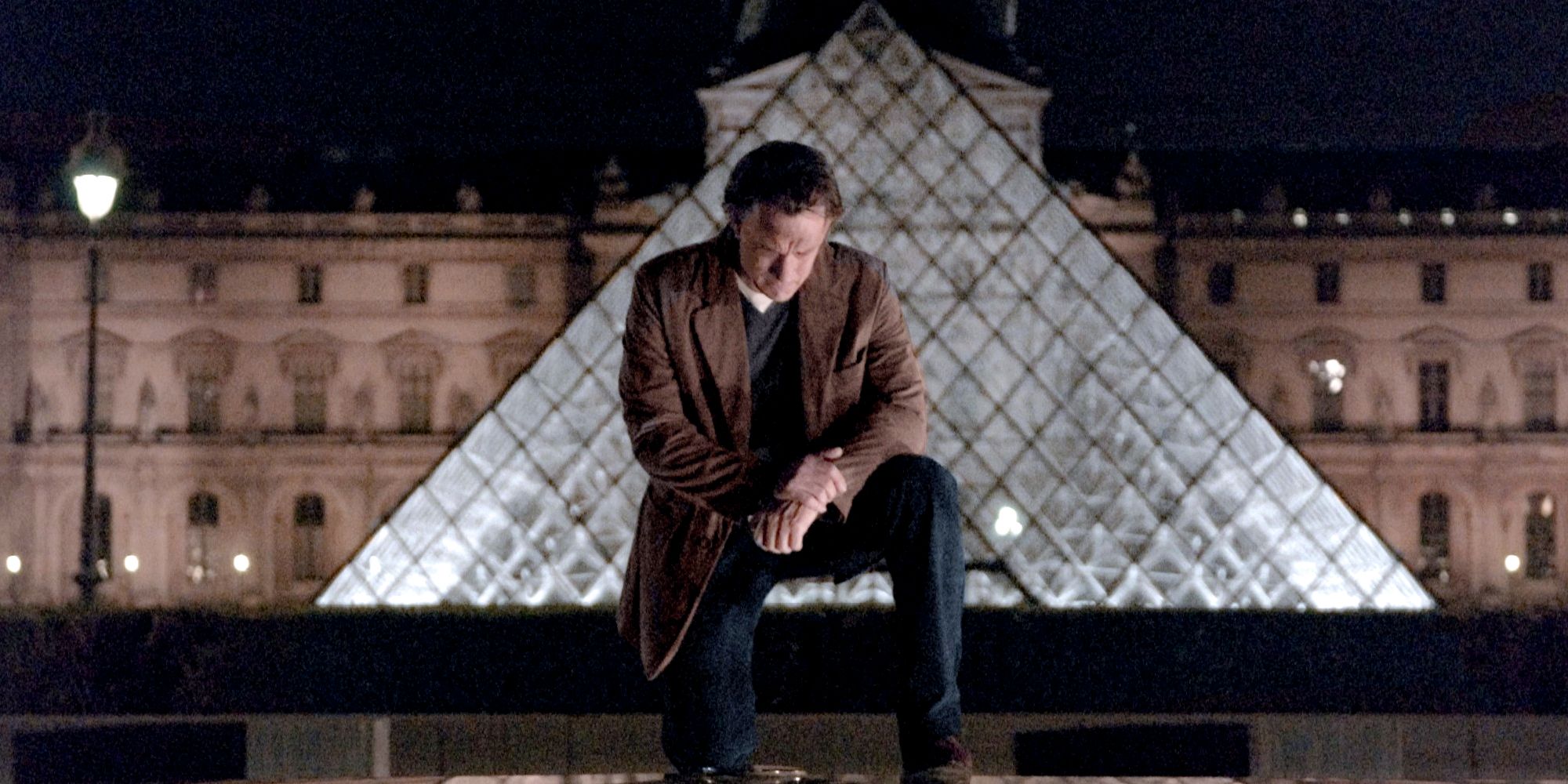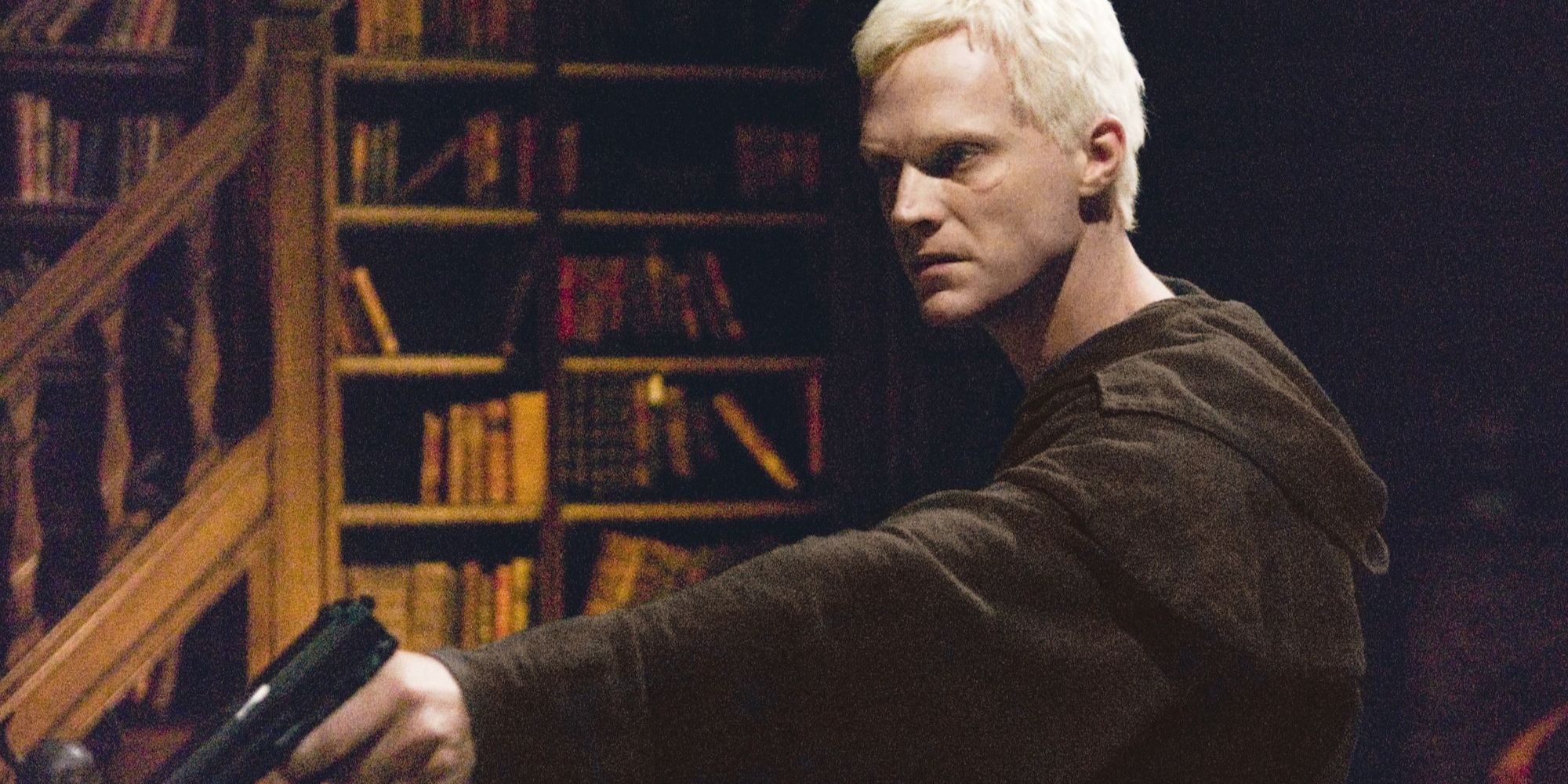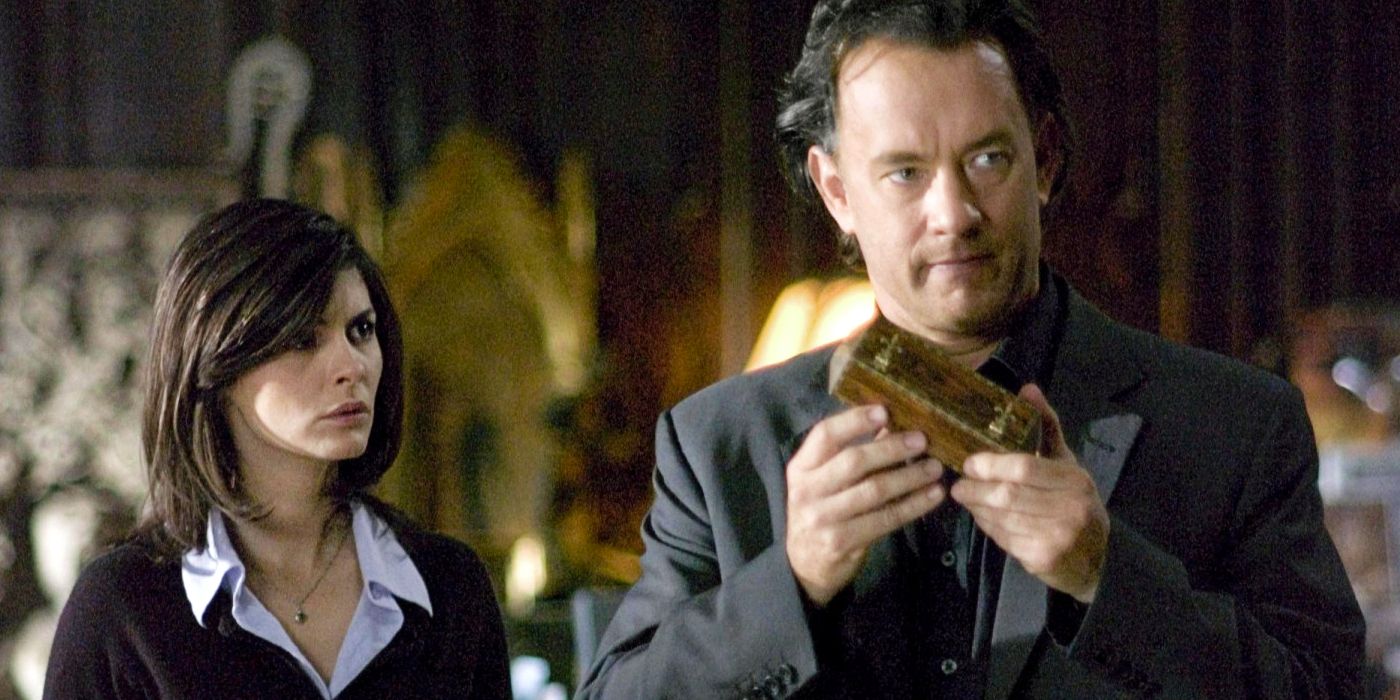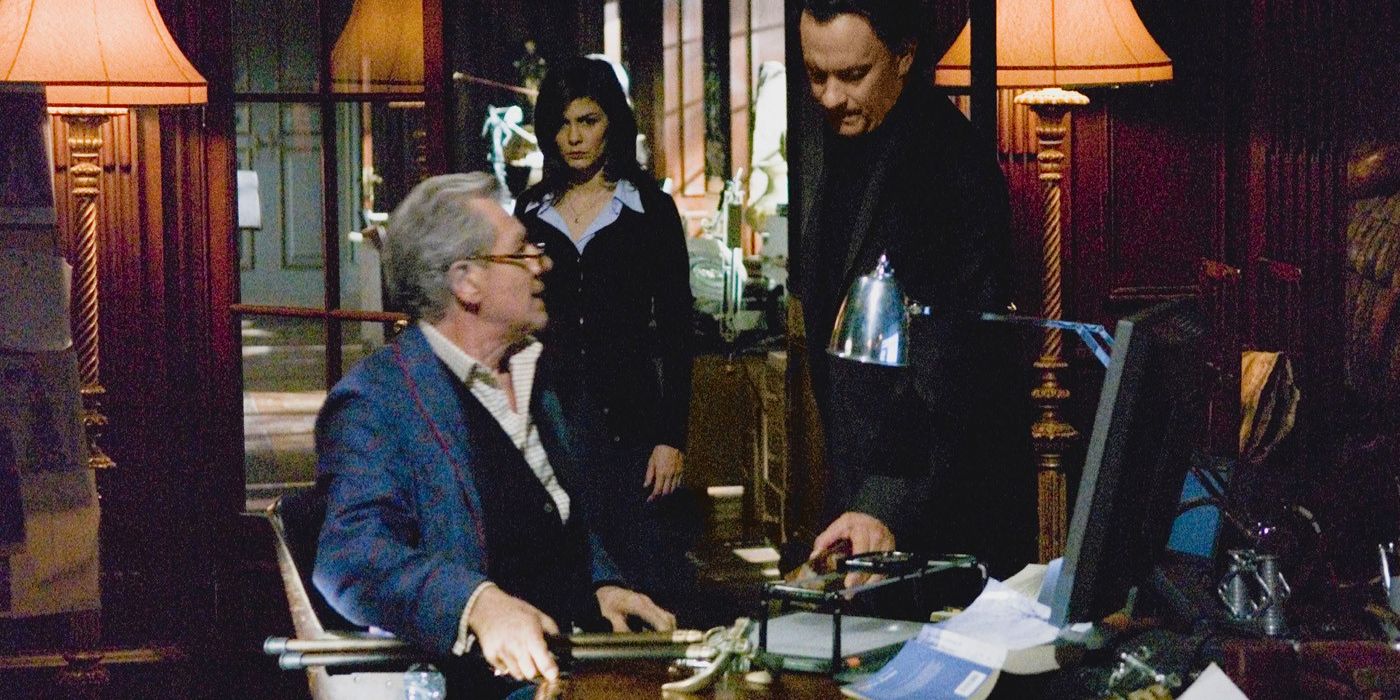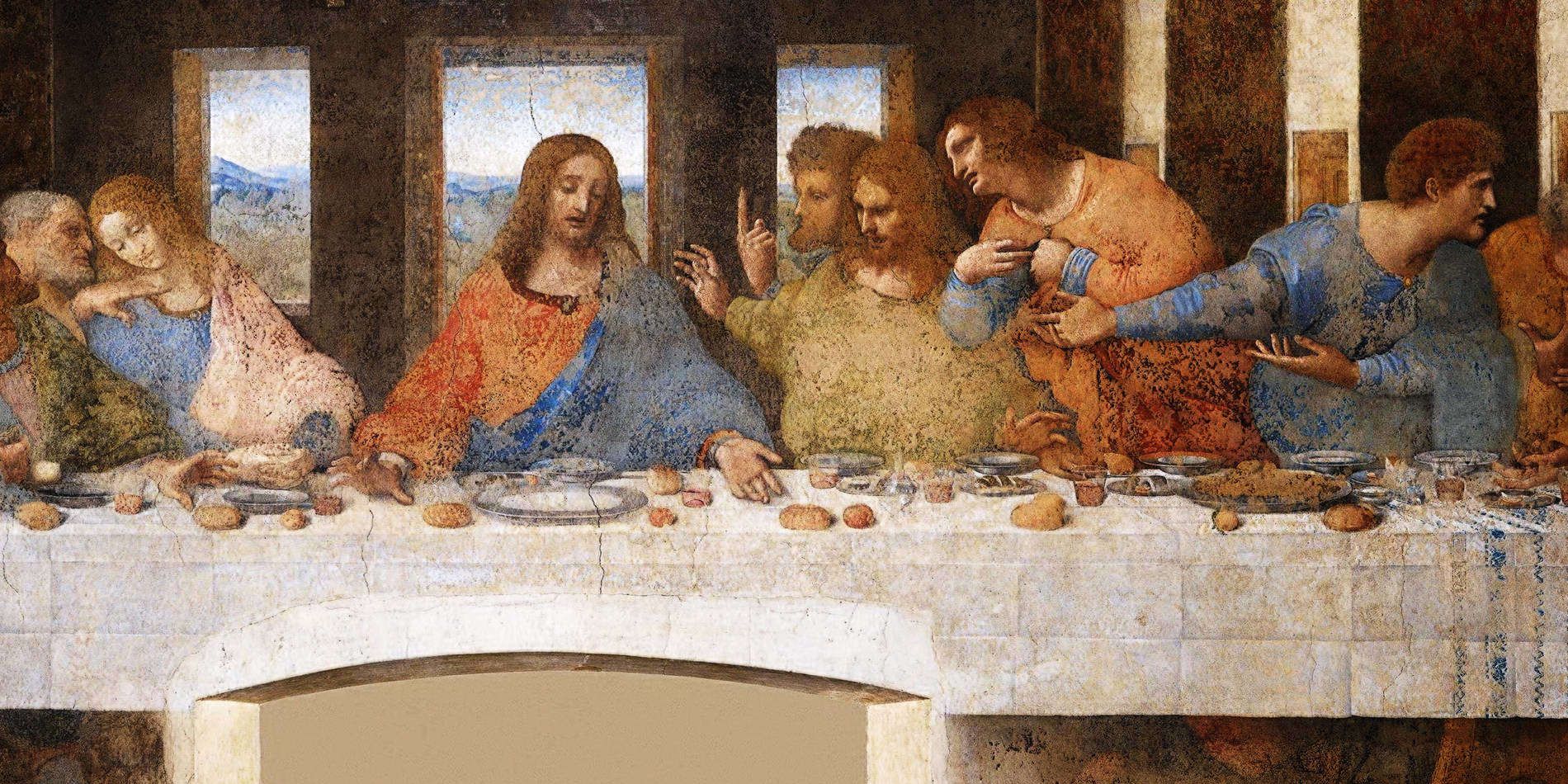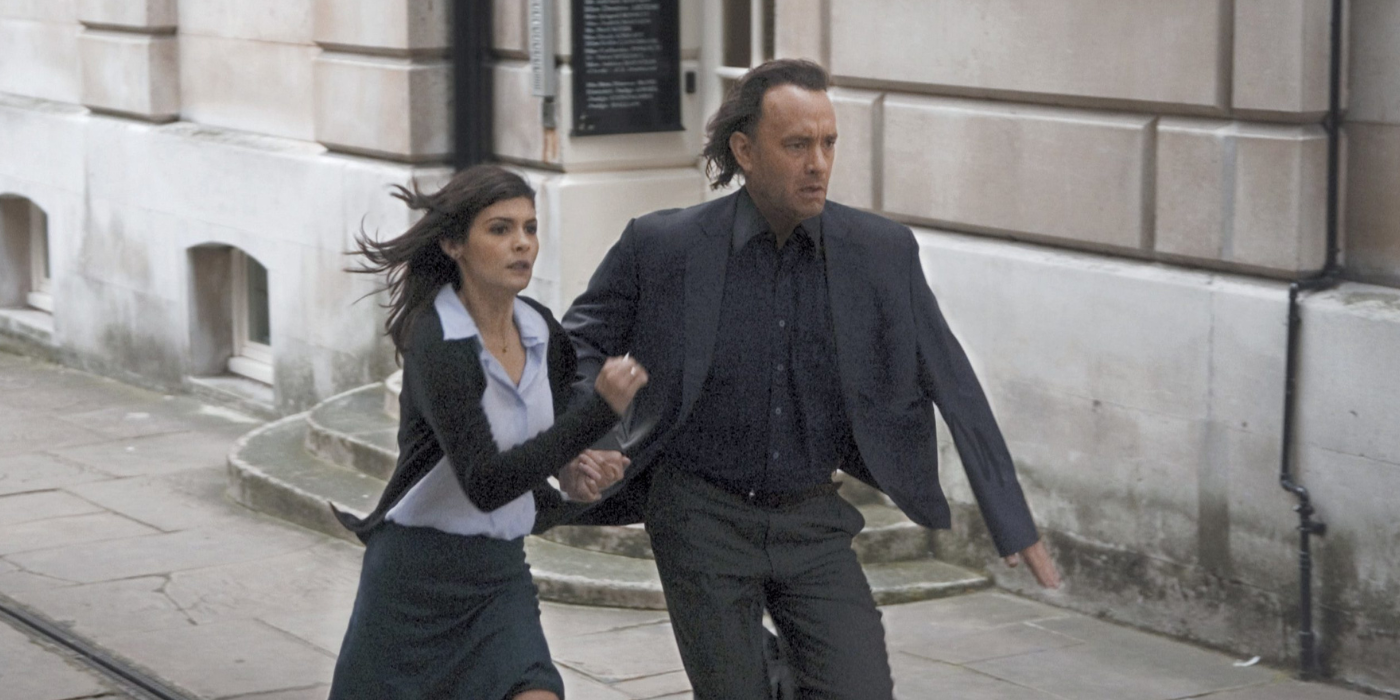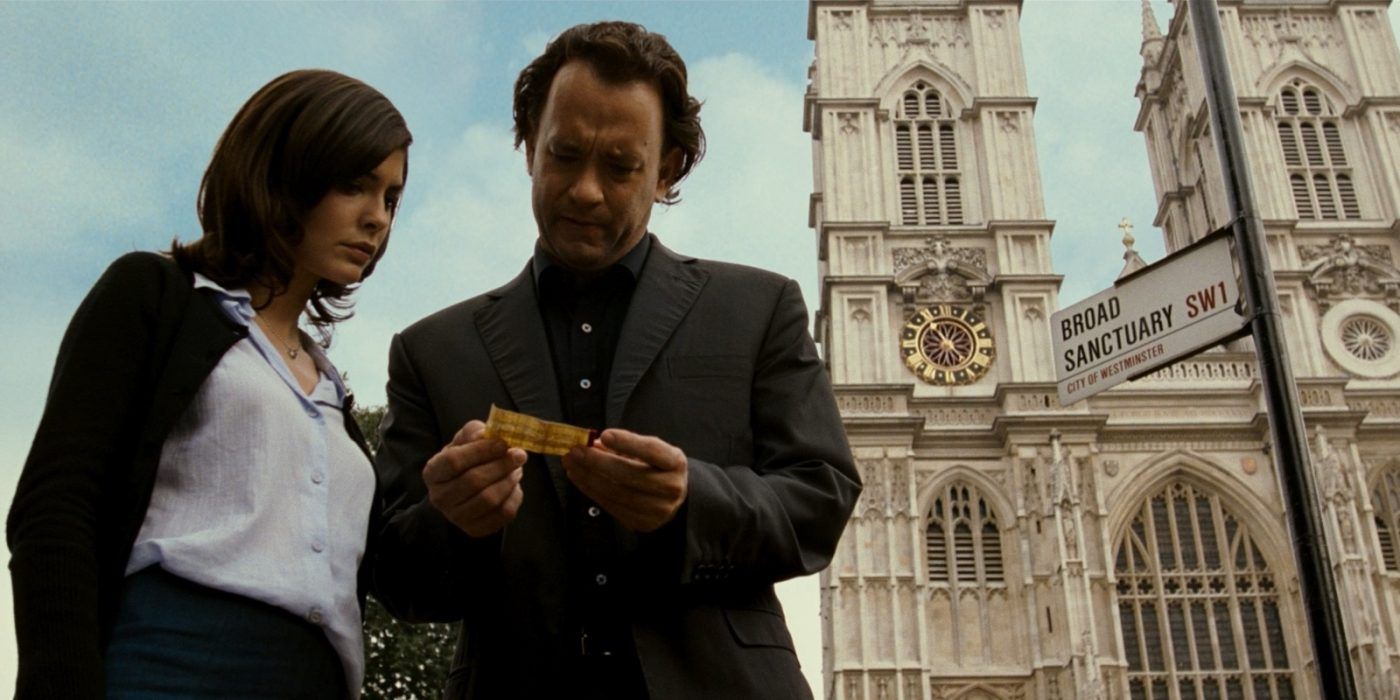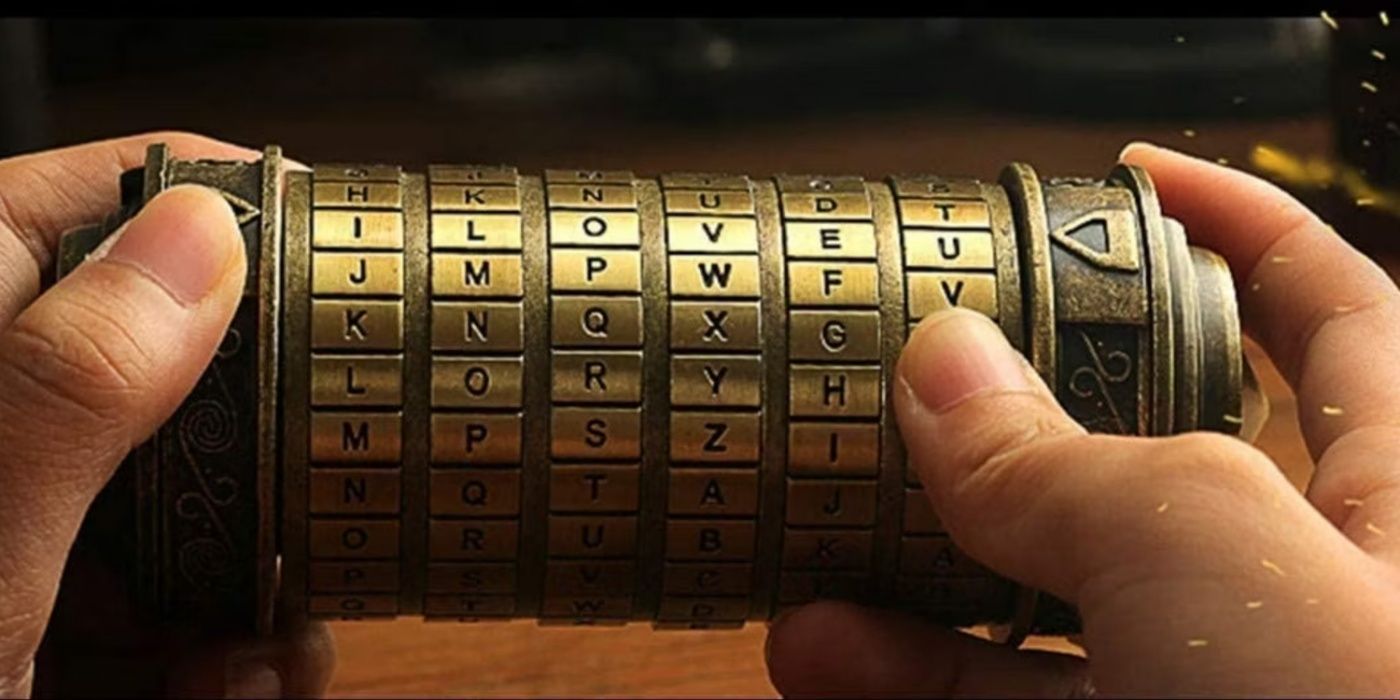Summary
- The Da Vinci Code, both in book and film form, has faced extreme criticism for its religious, historical, and scientific inaccuracies.
- The fictional portrayal of the Knights Templar and the Priory of Sion in the story is loosely based on real historical organizations, but with significant alterations.
- The portrayal of the Louvre Museum, Leonardo da Vinci, and certain claims about Jesus and Mary Magdalene in the story are mostly fictional and not supported by historical evidence.
Dan Brown’s controversial mystery thriller The Da Vinci Code real story is still debated by fans and critics. Adapted by Ron Howard in 2006 as the first film in the Robert Langdon series, The Da Vinci Code chronicles the tale of Harvard religious symbologist Robert Langdon (Tom Hanks) and cryptologist Sophie Neveu (Audrey Tautou), who gets embroiled in a quest that involves a host of covert historical societies and the Holy Grail. Due to both controversy and idiosyncrasies with real-life conspiracies, what is the Da Vinci Code in real life?
The Da Vinci Code, both in book and film form, has been subject to extreme criticism, owing to the fact that a sizable number of claims made by the author, Dan Brown, are rooted in religious, historical, and scientific inaccuracies. Apart from this, the depiction of European art, history, and culture treads muddied waters. Due to the controversial nature of The Da Vinci Code, it is difficult to separate fact from fiction, as certain historical occurrences are twisted by Brown to suit narrative purposes. This is true across the entire Robert Langdon franchise. Here’s The Da Vinci Code real story, along with the major aspects of the work that are mostly real and fake.
Mostly Real - Existence Of The Knights Templar And The Priory Of Sion
When trying to answer the question of is The Da Vinci Code real, it's best to start with what's accurate. Per Dan Brown, the legendary Holy Grail is not the literal chalice used in The Last Supper, but in fact, Mary Magdalene, a secret protected by The Knights Templar (featured in Assassin's Creed as the real-life order of knights). Historically, The Knight’s Templar or The Order of Solomon's Temple was a Catholic military order founded in 1119, which was closely tied with the Crusades, as they were protectors of Christian pilgrims.
The first association between the Templar and the Holy Grail can be traced back to German writer Wolfram von Eschenbach, and his Arthurian epic poem, Parzival. This poem presents the Grail as a mysterious, live-restoring cup, which is used as a reference point by Brown, who then alters the premise into claims about Jesus and Mary’s sacred bloodline. Moreover, there is no historical evidence that The Knights Templar discovered the Grail and were annihilated due to the knowledge of the same (although that hasn't stopped the Holy Grail from being a MacGuffin in dozens of King Arthur movies).
The existence of The Priory of Sion was indeed real, as it was a fraternal organization founded by Pierre Plantard in 1956. However, the nature of the group differs wildly from Brown’s portrayal, who claims that the Priory boasted members like Leonardo da Vinci and Victor Hugo. While this is not true, the historical Priory of Sion did present a series of documents to prove the existence of a bloodline descending from Jesus and Mary Magdalene, which was later exposed as an elaborate hoax in the form of an esoteric puzzle. This failed attempt by Plantard has been exhaustively debunked by scholars and journalists alike, but Brown chose to base his claims on Plantard’s forged documents.
Mostly Fake - Facts About The Louvre Museum And Its Paintings
The Louvre Museum is a key narrative choice made by Brown, as the murder of museum curator Jacques Saunière takes place within this space, and Langdon’s quest for the Grail ends here as well. However, Brown makes a series of claims about the world-renowned museum, especially the Louvre Pyramid, which, per him, was made of 666 panes of glass, at the behest of architect François Mitterrand. This is false, as the Louvre states that the number of glass panes used is 673.
Brown also claims that the Louvre houses 65,300 pieces of art when in reality, it houses close to 35,000 to date. Brown also delves deep into the paintings featured in the Grand Gallery, including the Mona Lisa, claiming that Da Vinci meant to symbolize an androgynous whole through his work, which is contested by various art historians. Apart from this, the most glaring inaccuracy is Leigh Teabing’s (Sir Ian McKellen) interpretation of The Last Supper, in which he claims that Da Vinci slipped in the depiction of Mary Magdalene. This is majorly refuted by art historians, who posit that Da Vinci painted John with a feminine touch to distinguish him as the youngest apostle.
Mostly Real - Certain Inner Workings Of Opus Dei
Opus Dei was founded in Spain in 1928 by Catholic saint Josemaría Escrivá and remains controversial to date. Brown incorporates the inner workings of the organization in order to add layers to the character of Silas, the main antagonist who resorts to murder on being spurred by “The Teacher.” Brown portrays some inner workings of Opus Dei in a fairly accurate light, such as when he shows Silas (played in the movie by the MCU’s Vision, Paul Bettany) using a spiked belt to carry out corporal mortification, which is in keeping with the organization’s actual practices.
The teachings of Escrivá, including the mantra repeated by Silas, “pain is good,” is a loose exaction but accurate nonetheless. Brown also describes the new headquarters of Opus Dei in New York with great accuracy and touches upon the controversies the organization is often embroiled in. On the other hand, there are gross inaccuracies when it comes to certain historical facts in relation to Opus Dei. Both Langdon and Neveu refer to Silas as a “monk”, which is inaccurate, although this might be deliberate to highlight the utter lack of knowledge when it comes to secretive societies.
Mostly Fake - Certain Claims About Leonardo Da Vinci
Tom Hank's Langdon, Neveu, and Teabing are presented as expert cryptographers, who hold the ability to decipher cryptic symbols and ancient texts. These characters discuss Leonardo da Vinci’s reverse text, which was indeed used by him to cloak some of his progressive theories on astronomy, geology, and archaeology.
However, Brown exaggerates this fact by suggesting that Da Vinci left clues in his artwork about secret religious beliefs, which is untrue per art critics and historians. Brown also claims that Da Vinci created elixirs of immortality, along with torture instruments - this is almost entirely false, as suggested by the utter lack of historical evidence. Apart from this, Langdon’s claim that Da Vinci’s diary contained intricate designs of the cryptex is also untrue.
Mostly Real - Key Facts About Pagan History And Traditions
The dubious portrayal of primordial traditions, historical events, and religious practices pervades all Dan Brown novels, such as the inaccurate and oversimplified accounts of the Renaissance and the Black Death in box-office flop Inferno. However, The Da Vinci Code does get the basics of pagan history mostly right, tracing back to the root word, which originally meant “country-dweller.” The pentacle is deemed as one of the most ancient symbols on earth, which is also true, but Brown’s claim that paganism only represents the “sacred feminine” is flawed at best, as the symbolism embedded within this symbol is more nuanced and comprehensive.
Nonetheless, there is much truth to the claim that pagan symbols and deities were demonized by dominant religious structures and that Christianity borrowed heavily from pagan traditions (similar to those seen in 2019's breakout pagan folk-horror masterpiece Midsommar). For instance, Brown is mostly right when he states that December 25 was also considered the birthdate of Mithras, Osiris, Adonis, and Dionysus, which is mostly due to the fact that the end of December is closest to the winter solstice, a historically significant time to celebrate miracles and rebirth.
But, Brown falsely claims that the gnomon in Saint-Sulpice is a pagan astronomical device, as in reality, it is an astronomical instrument, whose brass strip is not called the Rose Line.
Mostly Fake - Certain Claims About Jesus And Mary Magdalene
One of the most controversial claims made by Brown in The Da Vinci Code was the union of Jesus Christ and Mary Magdalene, and the bloodline that existed due to the same. Other movies like Passion of the Christ insinuated a stronger bond between the two than is biblically portrayed, but in Dan Brown’s timeline, they fully got down to business. While explaining this to Neveu, Langdon starts off by claiming that Magdalene descended from the tribe of Benjamin, much like the first king of Israel, Saul, hence making the bloodline royal in nature.
The problem with this claim is the lack of historical evidence and the fact that “Magdalene” meant “from Magdala”, hinting she did not hail from the tribe of Benjamin. Besides, textual evidence in the canonical Gnostic gospels, and the New Testament, which is the source of Brown’s claims, do not support his interpretation. Furthermore, the falsity of this claim can be traced back to Plantard’s ideas, which have already been exposed as an elaborate fabrication.
Why The Da Vinci Code's History Was So Controversial
A causal factor for the controversy surrounding The Da Vinci Code, whether on screen or on page, is its perceived anti-Catholic message. Whether Dan Brown's first Langdon story was critical of believers in Catholicism is debatable. A common misconception is that Dan Brown was raised Catholic and harbors resentful views on a personal level, but he was actually Episcopalian until his beliefs changed during school. He also harbors no ill will towards religion and religious people in general, and far from being a pronounced atheist, he actually holds spiritual beliefs of his own. Speaking to Parade way back in 2009, Brown said of his relationship with faith:
"The irony is that I've really come full circle. The more science I studied, the more I saw that physics becomes metaphysics and numbers become imaginary numbers. The further you go into science, the mushier the ground gets. You start to say, 'Oh, there is an order and a spiritual aspect to science."
The Da Vinci Code does come off as highly critical of the Catholic Church as an institution and the zealousness with which it can encourage monastic orders to follow doctrine (although playing on scary cultish monks for drama isn't new – Evil's silent monastery is a recent example). The Da Vinci Code's alternate take on history, supported in part by the discovery of now-debunked "artifacts" like the Dead Sea Scrolls and interest in the Gospel of Mary Magdalene, was deemed as offensive by the Church itself initially, mainly on a theological level. It contravened too many principles of the established Catholic orthodoxy.
As a branch of Christianity, canonical history around Christ is especially important to Catholics – it's from the Catholic Church the word "canon" originates, and for centuries, it basically just meant what did/did not happen to Jesus and the Saints. It didn’t help that Tom Hanks' fictional Langdon was incorrectly believed to be based on a real person or events. However, as hype around The Da Vinci Code died down, so did vocal opposition. Faith is a deeply personal element of life, and it's wrong to say that every Catholic believer is offended by The Da Vinci Code.
Most understand it's a work of fiction, and that Dan Brown's intent wasn't to bring down the Church or attack their personal beliefs (as much as some branches of the media liked to inflame the situation and suggest otherwise). It should be noted that there's nothing in Biblical scripture to suggest Jesus was married, to Mary or anyone. The purity of Christ upon his death is a foundation of many parts of the Christian faith as it represents the ideal that Jesus was above carnal pleasures and sins of the flesh. It's important this is recognized because it explains Dan Brown's alterations to Biblical history matter so much.
Many adaptations of the Bible change crucial details, even around the life of Jesus. However, suggesting that Jesus was not only intimate with a woman but also that the divine Son of God passed on his seed and sired a mortal bloodline is different. The idea has surfaced in history before, and it was in past eras deemed heresy by the Church. The modern response to The Da Vinci Code wasn't as strong, but the controversy has its roots in a similar place. Some of those involved with the movies have even expressed disinterest in Dan Brown's stories, including Tom Hanks.
Dan Brown Didn't Make The Da Vinci Code To Be Anti-Christian
Along with The Da Vinci Code real story controversy, many religious groups have spoken out against Dan Brown's story as being anti-Christian. Certainly, given the conclusions and revelations about the history of Christianity that come out of the story, it is not surprising that a lot of people had a problem with it. However, Dan Brown has pushed back on claims that he is an atheist and that the story was meant to be an attack on the Christian religion.
In an interview (via: BBC) Brown admitted that he no longer believes in a lot of the concepts of God and religion he was taught growing up, including how life is created. However, he stops short of saying he believes there is no God, insisting that he sometimes feels there is something bigger than himself out there, and it is hard to step fully into atheism.
People Have Tried To Prove The Da Vinci Code Is Fake Often
The controversy over the Da Vinci Code real story has played out everywhere, including in books and other movies. This includes the book, Debunking the Da Vinci Code, which has Dr. Brant Pitre talking about the various claims made in Dan Brown's book and the movie itself. This looks at the controversy surrounding the allegations, from Jesus marrying Mary Magdalene to the cover-up of the Holy Grail. The term Debunking the Da Vinci Code was used in more places than that, including an entire segment on the ABC TV series Nightline that looked into the different events in the fictional tale. Scholar Darrell Bock explained the importance.
"Between 20 [percent] and 33 percent of the population say they believe the book or feel they benefited from the book... Now what's the church's responsibility to that group ... of people who believe that? You can't say, 'Oh, sorry, you shouldn't believe it'. You better engage them."
Arguably, the most famous breakdown of the Da Vinci Code real story came in the documentary, Da Vinci Code Decoded. The documentary, which is available to stream on Prime Video, touches on the controversies surrounding Jesus's possible marriage, the Gnostic Gospels, and any influence that Roman leaders had in writing the Books of the New Testament. This documentary even talks to Dan Brown and gets his thoughts on the controversy. On top of Brown, the documentary also brings in historians and authors who bring their expertise to the ideas presented, showing how popular the Da Vinci Code has been since its release.

